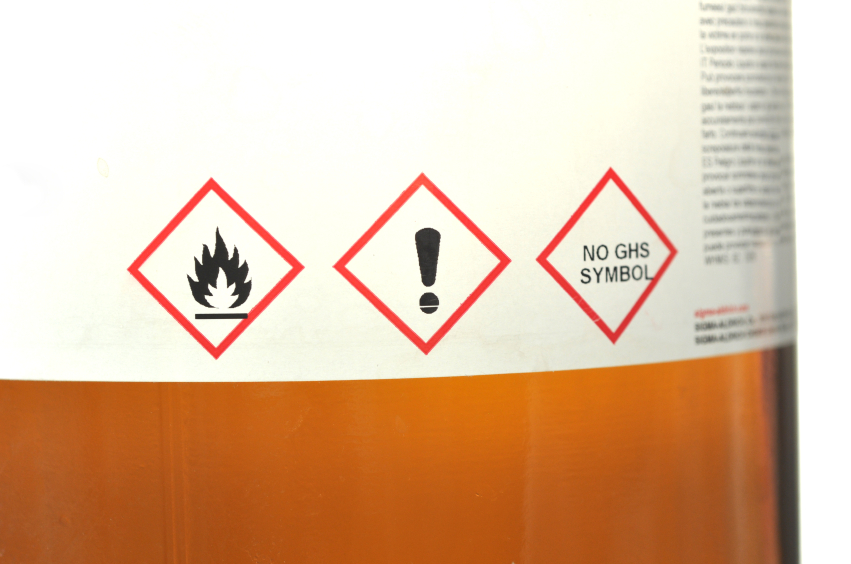
|
Quick Review
Under HazCom, each container of a hazardous chemical that is shipped must be properly labeled, tagged, or marked. A “container” is any bag, barrel, bottle, box, can, cylinder, drum, reaction vessel, storage tank, or the like that contains a hazardous chemical.
As of June 1, 2015, chemical manufacturers and importers are required to comply with the HazCom label requirements that were amended when OSHA adopted the Globally Harmonized System of Classification and Labeling of Chemicals (GHS) in 2012. Distributors have until December 1, 2015, to comply. As of December 1, 2015, all shipments of chemical containers must include the GHS-compliant label. Compliant labels include information about the chemical manufacturer or importer, a product identifier (e.g., chemical name) a signal word, a pictogram, a hazard statement, and a precautionary statement.
Under DOT’s Hazardous Materials Regulations (HMRs), labels are graphic representations of the hazard associated with a particular hazardous material. Typically diamond-shaped, labels are placed on the package holding the hazardous material and illustrate the package’s hazard (e.g., flammable). Generally, labels are applied to packages and drums.
Forget expensive calls to lawyers and consultants. With Enviro.BLR.com, you get instant access, 24/7. Try it out today and get the 2015 EHS Salary Guide, absolutely free. Download Now.
What OSHA Said Then and What OSHA Says Now
When OSHA amended the HazCom standard (29 CFR 1910.1200) to incorporate GHS, the Agency said that when a pictogram is required by the DOT to appear on a shipped container, then the HazCom-GHS pictogram for the same hazard may not be used. This is still the current regulation at 49 CFR 1910.1200 Appendix C.2.3.3.
However, OSHA has had a change of heart. Here’s why: Under DOT’s HMRs at 49 CFR 172.401(b), a package may not be shipped if it has any marking or label that by its color, design, or shape could be confused or cause any kind of conflict with a hazard warning label required in the HMR. OSHA took this to the bank and, hence, we got the Appendix C.2.3.3 prohibition.
Along the way to GHS, there was a failure to communicate between OSHA and the DOT. The DOT does not consider the HazCom-GHS pictograms as a conflict. It is DOT’s view that the pictograms employed by the GHS were developed based largely on the existing HazCom standards for transport to ensure consistency of hazard communication for a variety of applications and contexts. As such, according to the DOT, the GHS pictograms are intentionally consistent with the symbols used in the labels and placards required by the HMRs that are used in international regulations and standards. As a matter of fact, for some international trade, both pictograms may need to be present on the label.
OSHA says it intends to revise the regulation to reflect this understanding.
Enviro.BLR.com puts everything you need at your fingertips, including practical RCRA, CAA, CWA, hazardous waste regulatory analysis and activity, news, and compliance tools. Try it at no cost or risk and get a FREE report.
Meanwhile . . .
While OSHA is going through the process of amending the HazCom regulation, it will allow both DOT and HazCom pictograms for the same hazard on a label. While the DOT diamond label is required on the outside shipping containers for all hazardous chemicals, chemicals in smaller containers inside the larger shipping container do not require the DOT diamond, but do require the OSHA pictograms.
